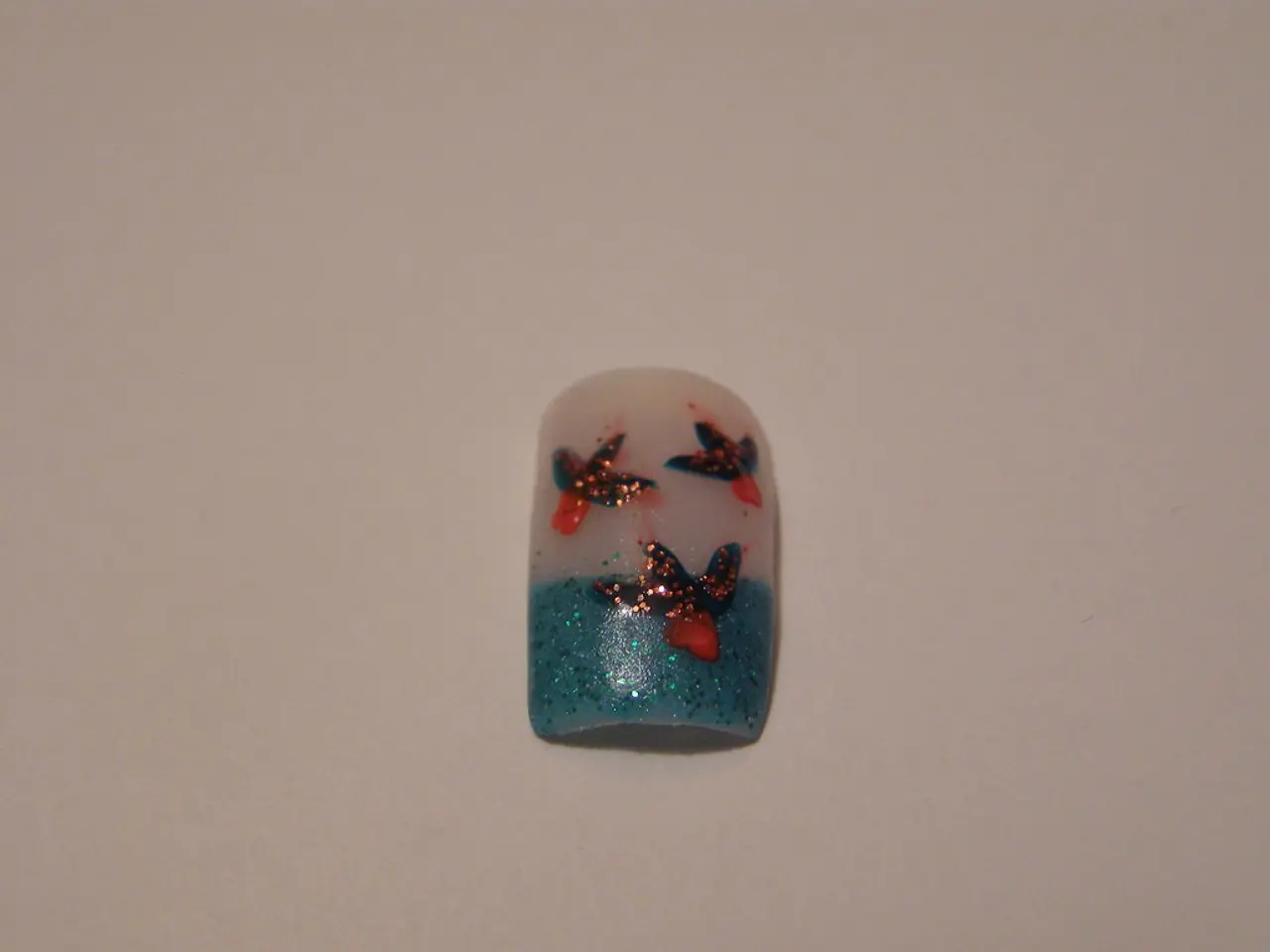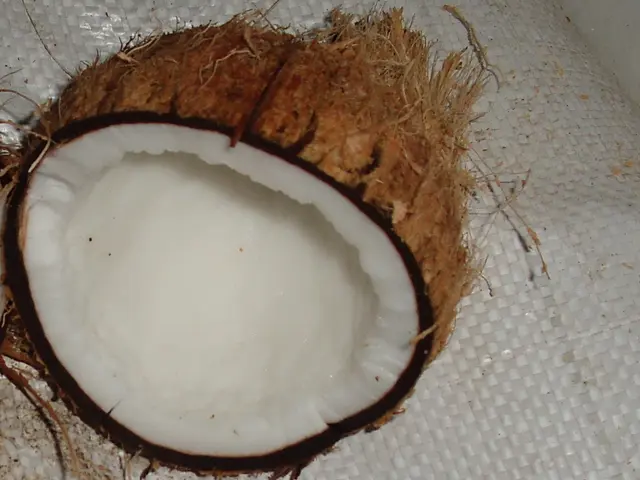Psoriatic arthritis nail alterations: Symptoms detailed, further information provided
Psoriatic arthritis (PsA) is a type of arthritis that commonly develops in people with psoriasis, a skin condition characterised by red, scaly patches. One of the lesser-known yet significant aspects of PsA is its impact on the nails.
Nail manifestations of PsA can be varied and profound, often mirroring the underlying inflammatory process connected to psoriasis. Common nail changes include pitting (small pinhead-sized dents or depressions in the nail surface), onycholysis (loosening and separation of the nail from the nail bed), nail crumbling, oil drop or salmon spots (yellow-reddish discoloration under the nails), subungual hyperkeratosis (thickening of the skin underneath the nail), and whitening of nails with small bleeding spots from capillaries.
Nail involvement occurs in 40-45% of people with psoriasis and up to 80-90% in those with PsA, highlighting a strong link between nail changes and joint disease.
When it comes to managing nail symptoms in PsA, a combination of home treatments, lifestyle measures, and medical interventions can be effective.
Home treatment and lifestyle measures include keeping nails trimmed short and clean, regular moisturising of the nail area, avoiding nail-biting or picking, protecting nails from injury and harsh chemicals, and using gentle nail care techniques.
Medical treatments range from topical therapies like corticosteroid creams or ointments, vitamin D analogs, and other agents, to systemic treatments such as nonsteroidal anti-inflammatory drugs (NSAIDs), disease-modifying antirheumatic drugs (DMARDs), and biologic therapies. These treatments target immune pathways, helping to control underlying systemic inflammation and, in turn, improve nail symptoms.
If nail symptoms cause significant discomfort or cosmetic issues, a rheumatologist or dermatologist can tailor treatment plans combining topical and systemic therapies. Regular monitoring and early treatment can help prevent progression of both nail and joint disease.
It's important to note that while treatments can help manage nail psoriasis, they can also have adverse effects. Complications of nail psoriasis include psychological distress, difficulty using the hands for certain tasks, and a higher risk of infection due to nail damage.
In its preclinical stage, psoriatic inflammation may lead to fatigue and joint pain before doctors can identify the condition as PsA. Early recognition and treatment can help manage the condition more effectively.
In conclusion, while there is currently no cure for PsA or nail psoriasis, treatments can help manage these conditions and reduce flare-ups. People with PsA should work closely with their care team to find the right treatments with minimal side effects and maintain good general nail care.
- Psoriatic arthritis (PsA) is a type of arthritis that commonly develops in people with psoriasis, a skin condition characterized by red, scaly patches.
- Nail manifestations of PsA can be varied and profound, often mirroring the underlying inflammatory process connected to psoriasis.
- Nail involvement occurs in 40-45% of people with psoriasis and up to 80-90% in those with PsA, highlighting a strong link between nail changes and joint disease.
- When it comes to managing nail symptoms in PsA, a combination of home treatments, lifestyle measures, and medical interventions can be effective.
- Medical treatments for nail psoriasis range from topical therapies to systemic treatments, with treatments targeting immune pathways to control underlying systemic inflammation.
- If nail symptoms cause significant discomfort or cosmetic issues, a rheumatologist or dermatologist can tailor treatment plans combining topical and systemic therapies.
- Early recognition and treatment of psoriatic inflammation can help manage the condition more effectively, reducing fatigue and joint pain before doctors can identify the condition as PsA.




